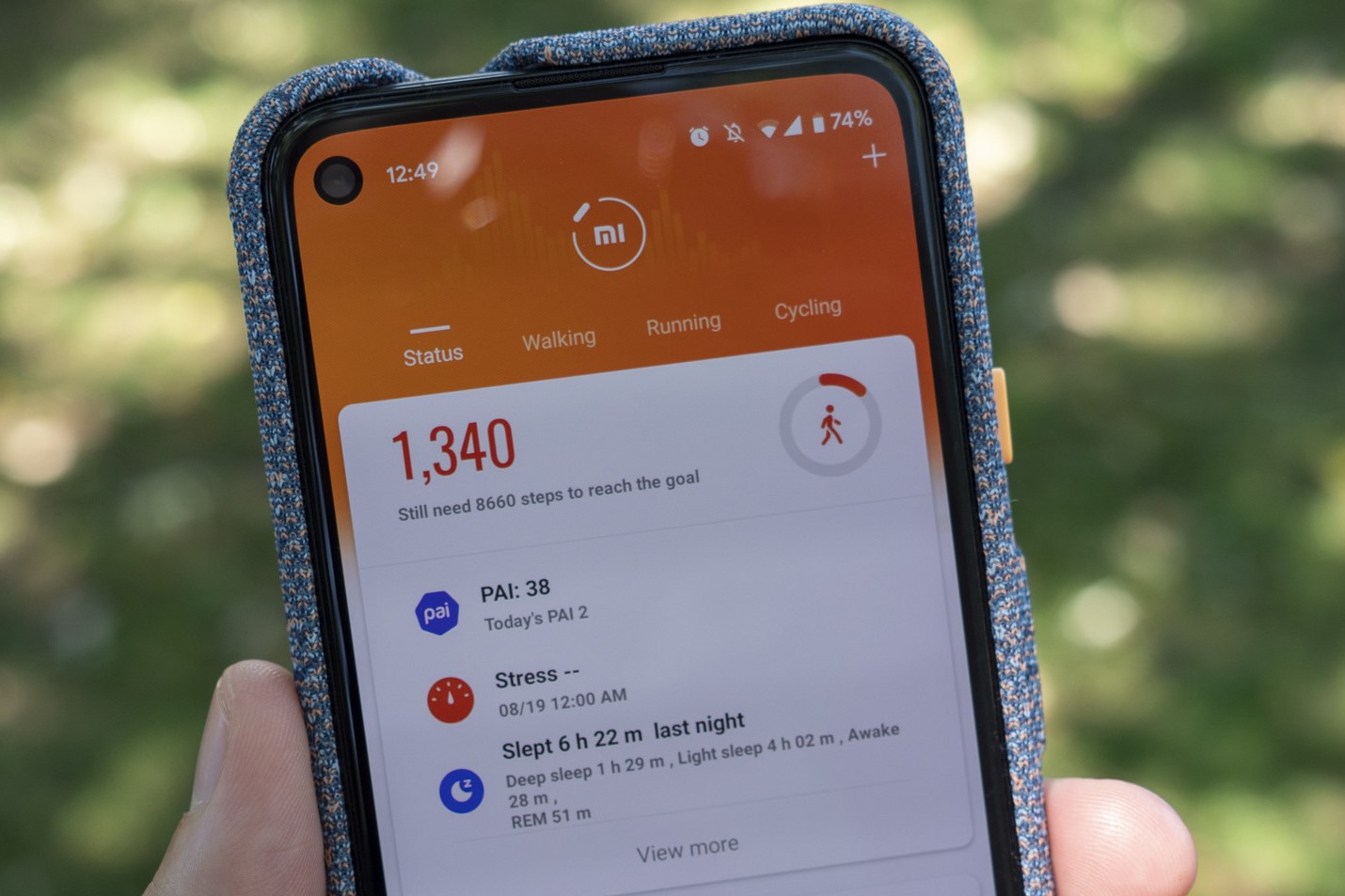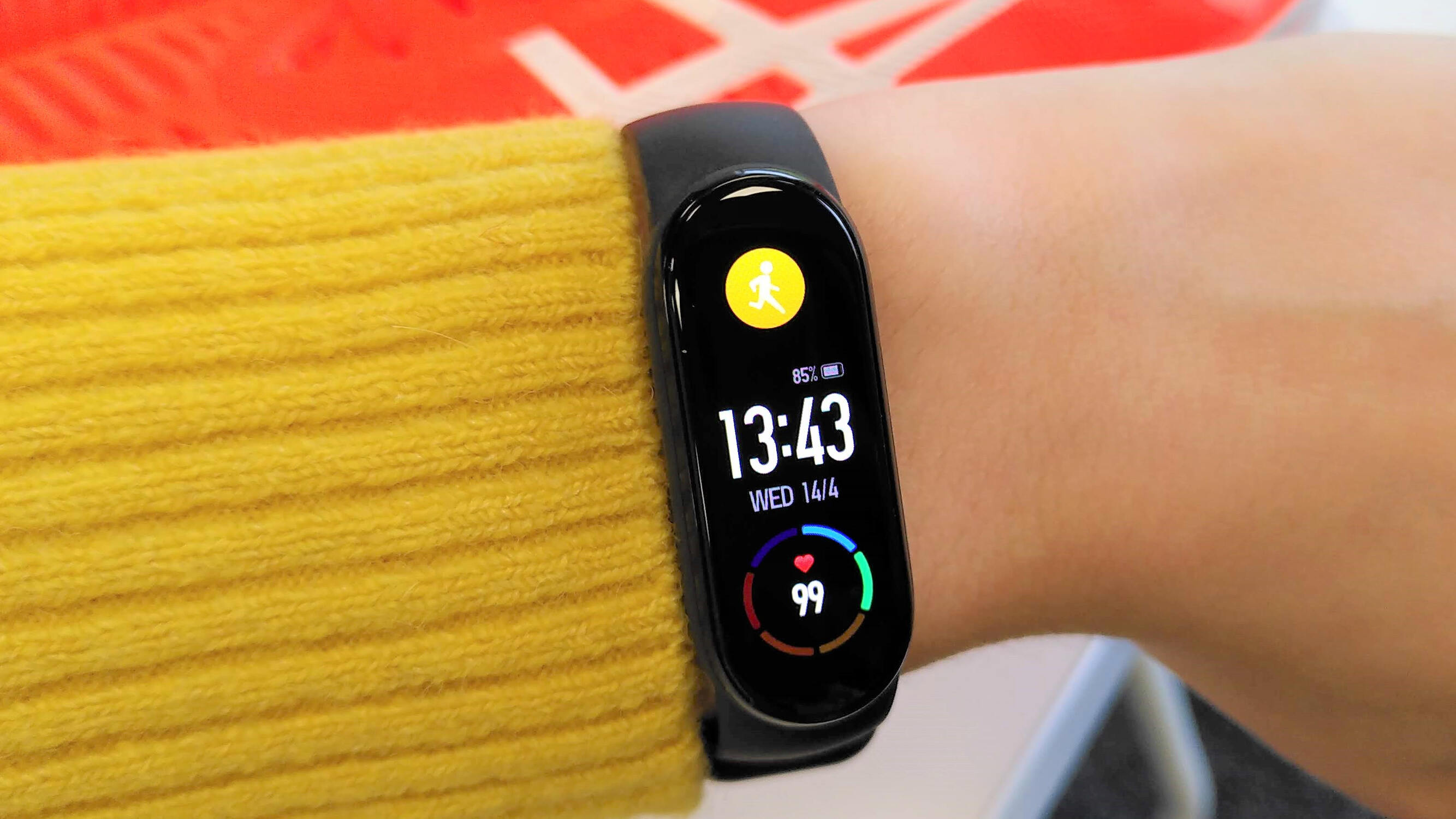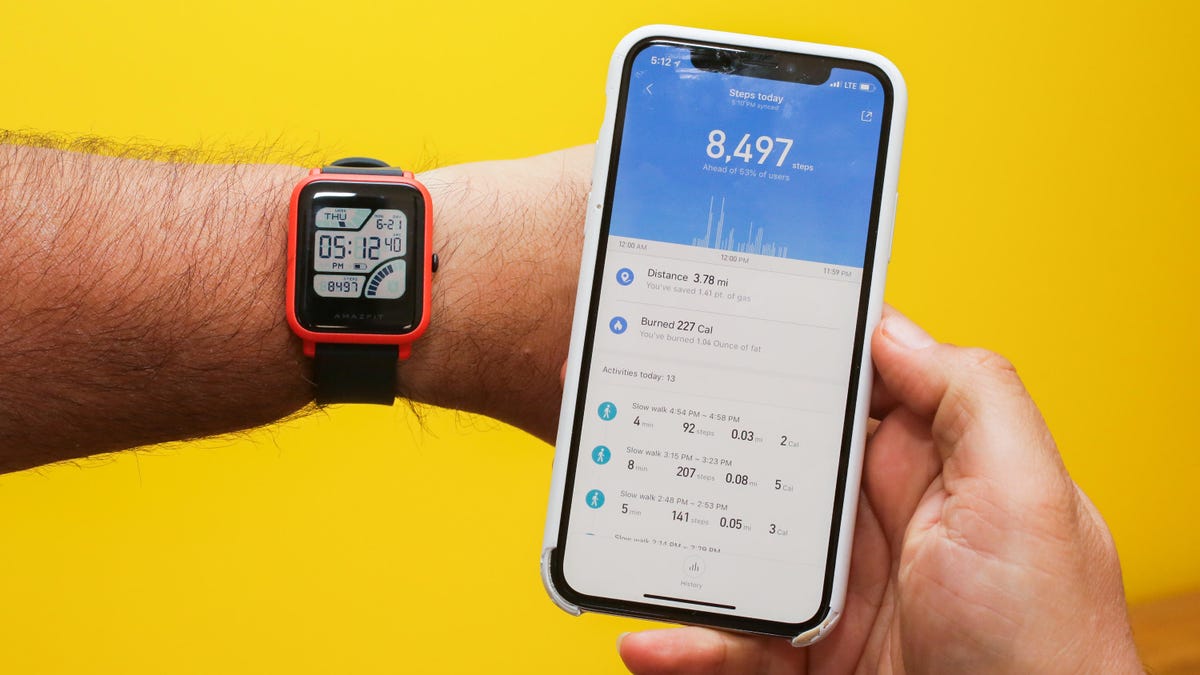Introduction
In today's fast-paced world, our reliance on mobile devices has become increasingly profound. Whether it's for staying connected with loved ones, managing work tasks, or simply entertaining ourselves, our smartphones have become indispensable. Amidst this dependency, one crucial aspect that often goes overlooked is the health of our device's battery. The battery is the lifeblood of our smartphones, and its longevity directly impacts our overall user experience.
Understanding and monitoring the battery health of your Xiaomi device is essential for ensuring optimal performance and longevity. By proactively managing your device's battery, you can mitigate the risk of unexpected shutdowns, slow charging, and diminished overall performance. This comprehensive guide will walk you through the step-by-step process of monitoring and maintaining the battery health of your Xiaomi device, empowering you to make informed decisions and extend the lifespan of your smartphone.
From checking battery usage and utilizing battery health monitoring apps to calibrating the battery, avoiding overcharging, and knowing when it's time for a battery replacement, this guide covers all the essential aspects of battery maintenance. By following these steps, you can not only optimize your device's battery performance but also contribute to reducing electronic waste by prolonging the lifespan of your Xiaomi device.
Let's delve into the intricacies of monitoring and maintaining the battery health of your Xiaomi device, empowering you to take control of this vital aspect of your smartphone usage.
Step 1: Checking Battery Usage
Understanding how your Xiaomi device utilizes its battery power is the first step in effectively monitoring its health. By gaining insights into the apps and processes that consume the most power, you can make informed decisions to optimize battery usage and extend its lifespan.
Built-in Battery Usage Tools
Xiaomi devices come equipped with built-in tools that provide detailed information about battery usage. To access this feature, navigate to the device's settings and locate the "Battery & performance" section. Here, you will find a breakdown of battery usage by various apps and system processes. This insightful display allows you to identify any power-hungry applications that may be draining the battery excessively.
Identifying Power-Draining Apps
Upon reviewing the battery usage statistics, pay close attention to apps that consistently rank high in power consumption. While it's natural for certain apps, such as navigation or gaming applications, to consume more power, an unusually high power usage by less demanding apps may indicate underlying issues. By identifying these power-draining apps, you can take proactive measures such as optimizing their settings, updating them to the latest versions, or considering alternative, more power-efficient alternatives.
Monitoring Standby Power Consumption
In addition to app-specific power usage, it's essential to monitor the device's standby power consumption. Standby power refers to the energy consumed when the device is not in active use. Excessive standby power consumption may indicate background processes or apps that are not optimized for power efficiency. By addressing these issues, you can significantly improve the overall battery life of your Xiaomi device.
Utilizing Battery Usage Graphs
Many Xiaomi devices offer detailed battery usage graphs, depicting power consumption trends over time. These graphs provide a visual representation of battery usage patterns, enabling you to identify any irregularities or sudden spikes in power consumption. By regularly reviewing these graphs, you can gain valuable insights into the overall health of your device's battery and take necessary actions to optimize its performance.
By diligently checking the battery usage of your Xiaomi device, you can proactively identify and address any factors contributing to excessive power consumption. This proactive approach lays the foundation for effective battery health monitoring and sets the stage for implementing targeted optimizations to enhance the overall battery performance.
Step 2: Using Battery Health Monitoring Apps
In the quest for comprehensive battery health monitoring, leveraging specialized apps tailored for this purpose can provide invaluable insights into the intricacies of your Xiaomi device's battery performance. These dedicated apps offer a range of features designed to assess, analyze, and optimize battery health, empowering users to make informed decisions and maximize the longevity of their device's battery.
Exploring Battery Health Apps
Battery health monitoring apps, readily available on the Google Play Store for Xiaomi devices, offer a diverse array of functionalities aimed at enhancing battery performance. These apps typically provide real-time data on battery temperature, voltage, and capacity, allowing users to gauge the overall health of their device's battery. Furthermore, they often feature detailed diagnostics, including charge cycle counts and historical usage patterns, enabling users to track the battery's degradation over time.
Customized Battery Optimization
Many battery health monitoring apps offer personalized optimization recommendations based on the specific usage patterns and charging behaviors of the device. By analyzing the data collected from the device's battery, these apps can suggest tailored settings adjustments to prolong battery life, such as optimizing screen brightness, managing background processes, and implementing power-saving modes. This personalized approach to battery optimization ensures that users can maximize their device's battery performance while minimizing unnecessary energy consumption.
Real-Time Alerts and Notifications
Battery health monitoring apps often incorporate real-time alerts and notifications to keep users informed about critical battery-related events. These alerts may include notifications about excessive temperature levels, abnormal voltage fluctuations, or prolonged periods of high power consumption. By promptly addressing these alerts, users can mitigate potential risks to the battery's health and take proactive measures to prevent adverse effects on overall performance.
Historical Performance Analysis
One of the key advantages of using battery health monitoring apps is the ability to conduct historical performance analysis. These apps maintain detailed logs of battery-related data, allowing users to track the battery's degradation trends and identify any irregularities in its performance. By leveraging this historical data, users can make informed decisions regarding battery maintenance, calibration, and potential replacement, ensuring that the device's battery health remains a top priority.
Seamless Integration with Xiaomi Devices
Battery health monitoring apps are designed to seamlessly integrate with Xiaomi devices, leveraging the device's hardware and software capabilities to provide accurate and reliable battery health insights. This integration ensures that users can access comprehensive battery diagnostics without compromising the device's performance or security, thereby fostering a harmonious balance between battery monitoring and overall user experience.
By harnessing the capabilities of battery health monitoring apps, Xiaomi device users can gain a deeper understanding of their device's battery health and take proactive steps to optimize its performance. These apps serve as indispensable tools in the quest for prolonged battery longevity, empowering users to make data-driven decisions that positively impact their overall smartphone experience.
Step 3: Calibrating the Battery
Calibrating the battery of your Xiaomi device is a crucial maintenance practice that can significantly impact its overall performance and longevity. Over time, the battery's internal software may lose track of its actual capacity, leading to inaccurate battery percentage readings and suboptimal performance. Calibrating the battery involves resetting the battery statistics and recalibrating the software to accurately reflect the battery's true capacity, thereby enhancing its performance and prolonging its lifespan.
Understanding the Calibration Process
The calibration process typically involves fully discharging the battery, followed by a complete recharge to 100%. This procedure allows the device's software to recalibrate and synchronize with the actual battery capacity, ensuring accurate power readings and optimized performance. While modern lithium-ion batteries do not require frequent full discharges to maintain their health, periodic calibration can help recalibrate the battery statistics and improve overall accuracy.
Initiating the Calibration Process
To initiate the battery calibration process on your Xiaomi device, begin by ensuring that the battery is sufficiently charged, ideally above 50%, to prevent any disruptions during the calibration. Next, use the device as you normally would until the battery level reaches a critically low percentage, typically around 5% or until the device automatically shuts down due to low battery. Once the device powers off, it indicates that the battery has been fully discharged.
Complete Recharge Cycle
Following the full discharge, connect your Xiaomi device to the charger and allow it to recharge uninterrupted until the battery reaches 100%. It's essential to refrain from using the device during this recharging phase to ensure a complete and accurate recalibration of the battery statistics. Once the battery reaches full capacity, the calibration process is complete, and the device's software should now accurately reflect the battery's true capacity.
Benefits of Battery Calibration
Calibrating the battery of your Xiaomi device offers several benefits, including improved accuracy in battery percentage readings, enhanced battery performance, and prolonged lifespan. Accurate battery readings enable users to make informed decisions about their device usage, ensuring that they can effectively manage power consumption and optimize battery longevity. Additionally, a calibrated battery contributes to a more consistent and reliable user experience, minimizing the risk of unexpected shutdowns or erratic battery behavior.
Frequency of Calibration
While battery calibration is not required frequently, it is advisable to perform this process periodically, especially if you notice discrepancies in battery percentage readings or experience unusual battery behavior. By incorporating battery calibration into your device maintenance routine, you can ensure that the battery's software remains synchronized with its actual capacity, promoting optimal performance and longevity.
By diligently calibrating the battery of your Xiaomi device, you can maintain accurate battery readings, optimize performance, and prolong the lifespan of your device's battery. This proactive approach to battery maintenance empowers users to maximize the utility of their smartphones while ensuring a consistent and reliable user experience.
Step 4: Avoiding Overcharging
Overcharging is a common concern that can significantly impact the long-term health and performance of your Xiaomi device's battery. While modern smartphones are equipped with advanced charging technologies, it's essential to adopt mindful charging habits to mitigate the risks associated with overcharging. By understanding the implications of overcharging and implementing preventive measures, you can safeguard the integrity of your device's battery and optimize its longevity.
Understanding Overcharging Risks
Overcharging occurs when a device remains connected to the charger after reaching full battery capacity. This prolonged exposure to electrical current can lead to increased heat generation within the battery, potentially accelerating its degradation. Over time, the cumulative effects of overcharging may result in diminished battery capacity, reduced overall lifespan, and compromised performance.
Optimal Charging Practices
To avoid overcharging your Xiaomi device, it's advisable to unplug the charger once the battery reaches full capacity. Modern smartphones often incorporate intelligent charging management systems that automatically cease charging once the battery is fully charged. However, to further minimize the risk of overcharging, it's prudent to disconnect the charger promptly upon reaching 100% battery capacity.
Utilizing Smart Charging Features
Many Xiaomi devices offer smart charging features that enable users to schedule charging times and optimize charging cycles. By leveraging these features, users can customize charging schedules to align with their usage patterns, ensuring that the device remains unplugged once the battery reaches full capacity. Additionally, smart charging functionalities may include adaptive charging algorithms that adjust the charging rate based on usage patterns, further enhancing battery health.
Implementing Battery-Friendly Practices
In addition to promptly unplugging the charger upon reaching full capacity, adopting battery-friendly practices can contribute to mitigating the risks of overcharging. This includes avoiding leaving the device connected to the charger for extended periods when the battery is already at full capacity. Furthermore, minimizing exposure to high temperatures, such as direct sunlight or hot environments, can help preserve the battery's health and reduce the likelihood of overcharging-related issues.
Monitoring Charging Cycles
Regularly monitoring the charging cycles of your Xiaomi device can provide valuable insights into charging patterns and habits. By reviewing the frequency and duration of charging sessions, users can identify any prolonged periods of overcharging and adjust their charging behaviors accordingly. This proactive approach enables users to maintain optimal charging practices and safeguard the long-term health of their device's battery.
By adopting mindful charging practices and leveraging the smart charging capabilities of your Xiaomi device, you can effectively avoid overcharging and preserve the integrity of the battery. These proactive measures contribute to optimizing battery longevity and ensuring consistent performance, empowering users to make the most of their smartphones while prioritizing battery health.
Step 5: Replacing the Battery
As smartphones age, the inevitable degradation of the battery becomes increasingly apparent, impacting the device's overall performance and usability. When proactive maintenance measures are no longer sufficient to sustain optimal battery health, the consideration of battery replacement becomes paramount. For Xiaomi device users, the prospect of replacing the battery presents an opportunity to revitalize the device and restore its functionality to its former glory.
Signs for Battery Replacement
Recognizing the signs that indicate the need for battery replacement is crucial in ensuring a seamless and uninterrupted smartphone experience. Common indicators include significantly reduced battery life, frequent unexpected shutdowns even at seemingly adequate battery levels, and prolonged charging times. Additionally, noticeable physical changes such as battery swelling or irregular heating during charging may signal the need for immediate battery replacement.
Professional Battery Replacement Services
When the need for battery replacement arises, seeking professional services from authorized Xiaomi service centers or certified technicians is highly recommended. These professionals possess the expertise and technical proficiency to safely and accurately replace the battery, ensuring that the device's integrity and functionality are preserved. Moreover, utilizing genuine Xiaomi replacement batteries guarantees compatibility and optimal performance, mitigating the risks associated with aftermarket or counterfeit battery replacements.
DIY Battery Replacement Considerations
For users with a penchant for DIY endeavors, replacing the battery of a Xiaomi device independently is a viable option. However, it is essential to approach this task with caution and meticulous attention to detail. Prioritizing safety measures, such as disconnecting the power source and adhering to comprehensive guides or tutorials specific to the device model, is imperative. Additionally, sourcing high-quality replacement batteries from reputable suppliers is crucial to safeguarding the device's performance and user safety.
Extending the Device's Lifespan
By embracing the prospect of battery replacement, Xiaomi device users can extend the lifespan of their smartphones, effectively breathing new life into their trusted devices. A fresh battery not only restores the device's battery life and performance but also contributes to sustainable technology usage by minimizing electronic waste. This proactive approach aligns with the ethos of responsible device maintenance and ensures that the device continues to serve its users reliably and efficiently.
Embracing Battery Replacement as a Renewal
Viewing the battery replacement process as a renewal rather than a setback reframes the narrative surrounding device maintenance. It presents an opportunity for users to actively participate in prolonging the lifespan of their devices, fostering a sense of ownership and sustainability. By embracing battery replacement as a positive step towards device revitalization, Xiaomi device users can continue to derive value and utility from their smartphones, ensuring a seamless and gratifying user experience.
In summary, the decision to replace the battery of a Xiaomi device signifies a proactive commitment to device maintenance and longevity. Whether opting for professional replacement services or embarking on a DIY endeavor, prioritizing the integrity and performance of the device is paramount. Embracing battery replacement as a renewal rather than a setback empowers users to sustainably extend the lifespan of their devices, ensuring continued reliability and functionality.
























